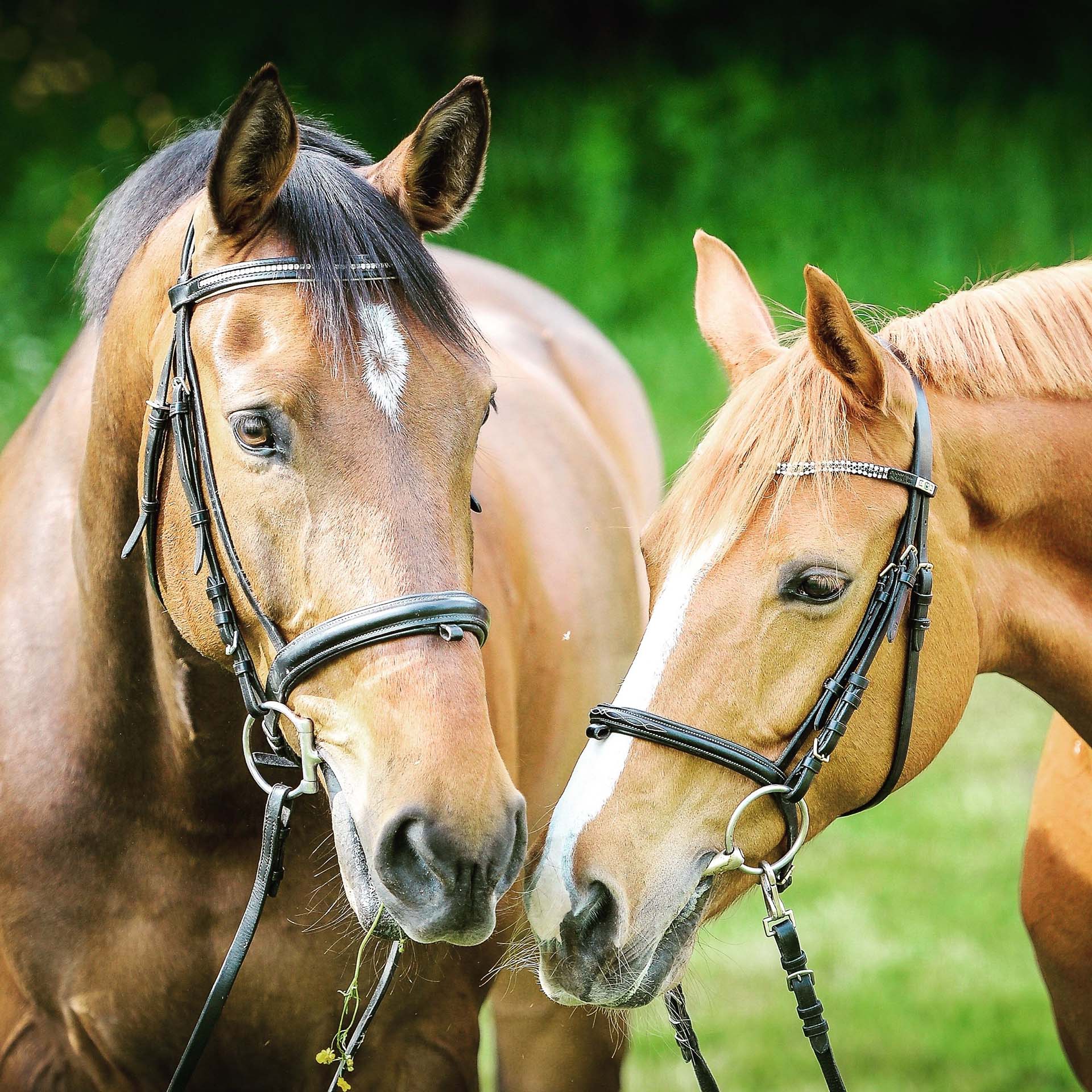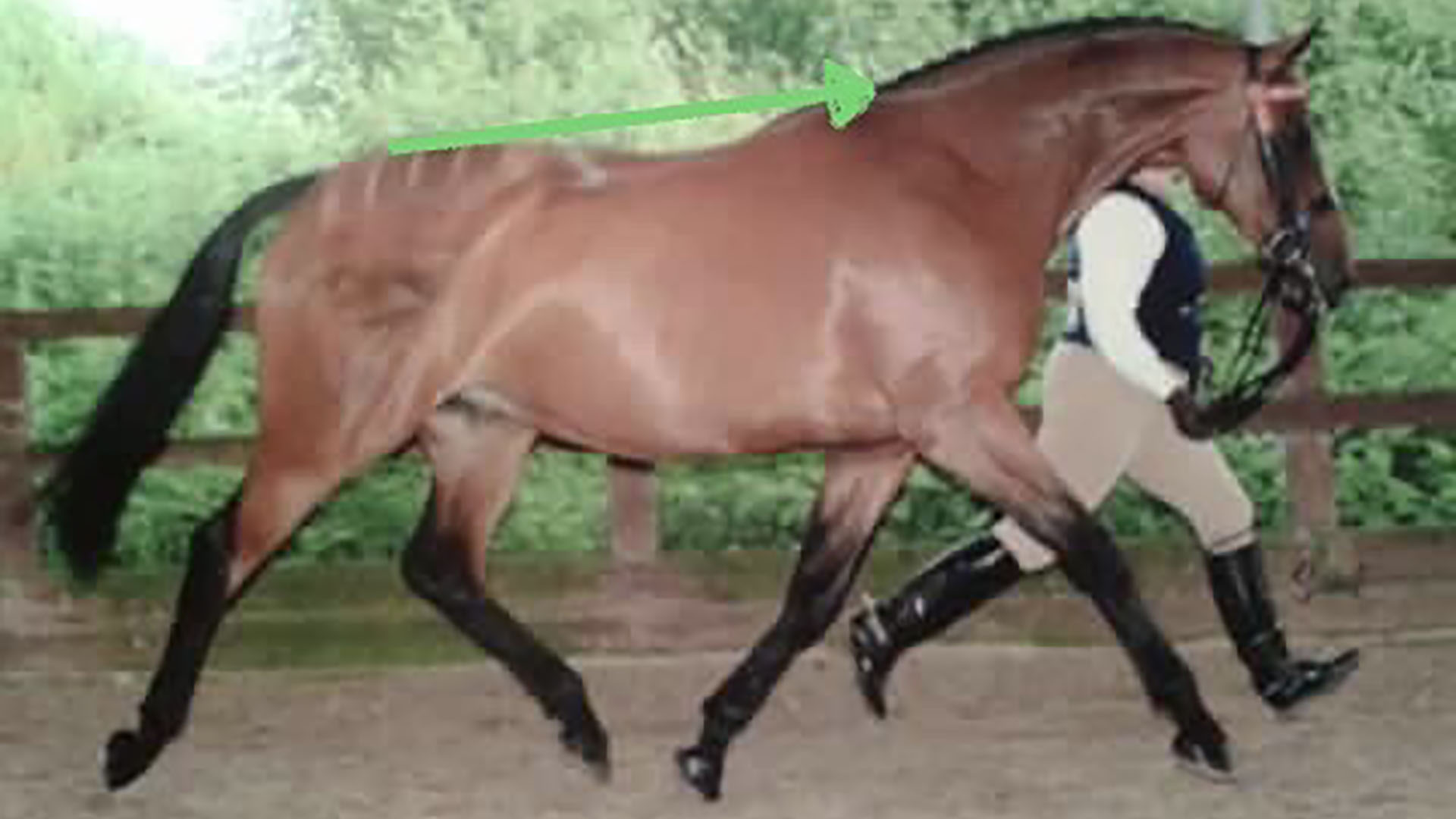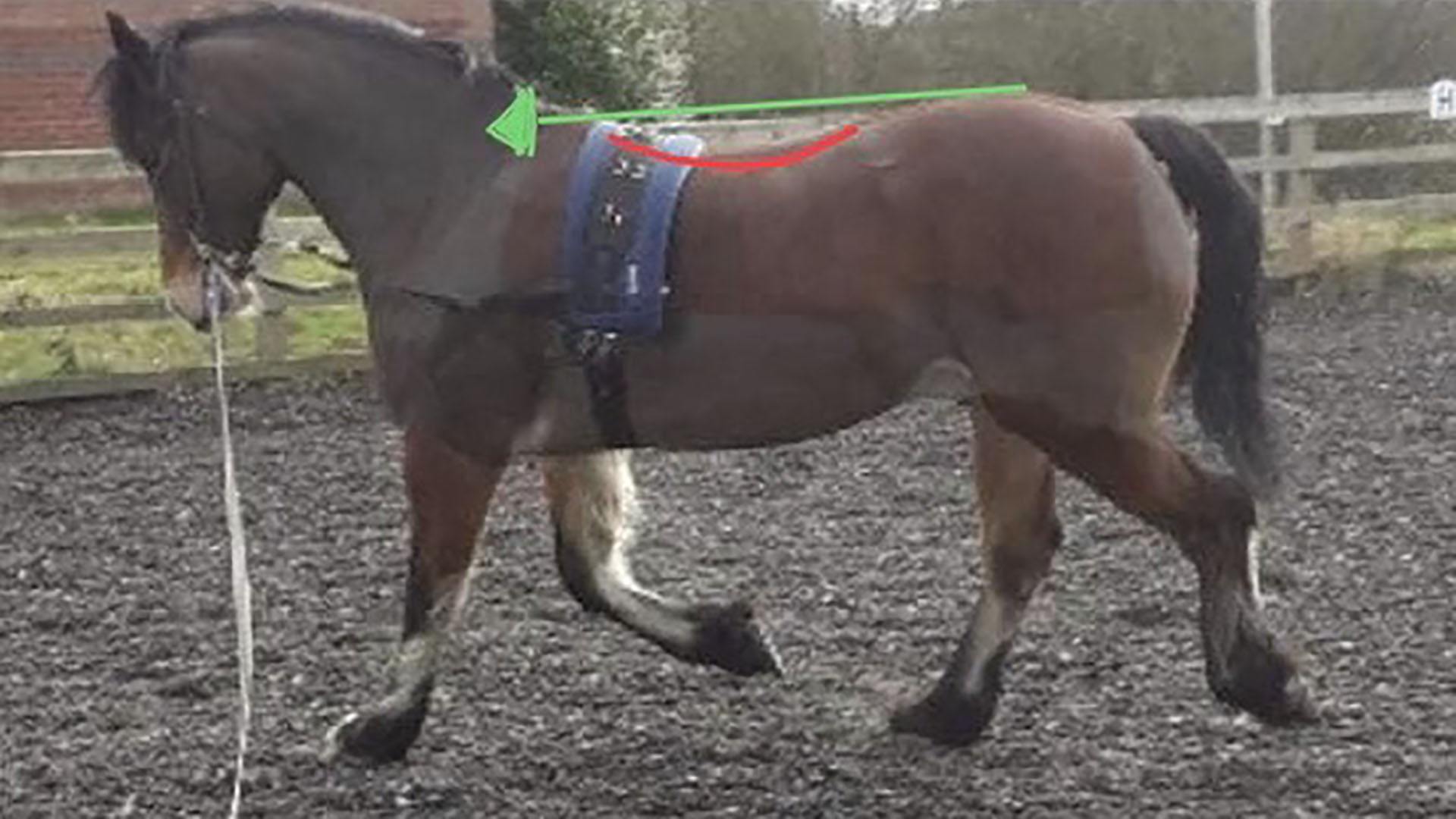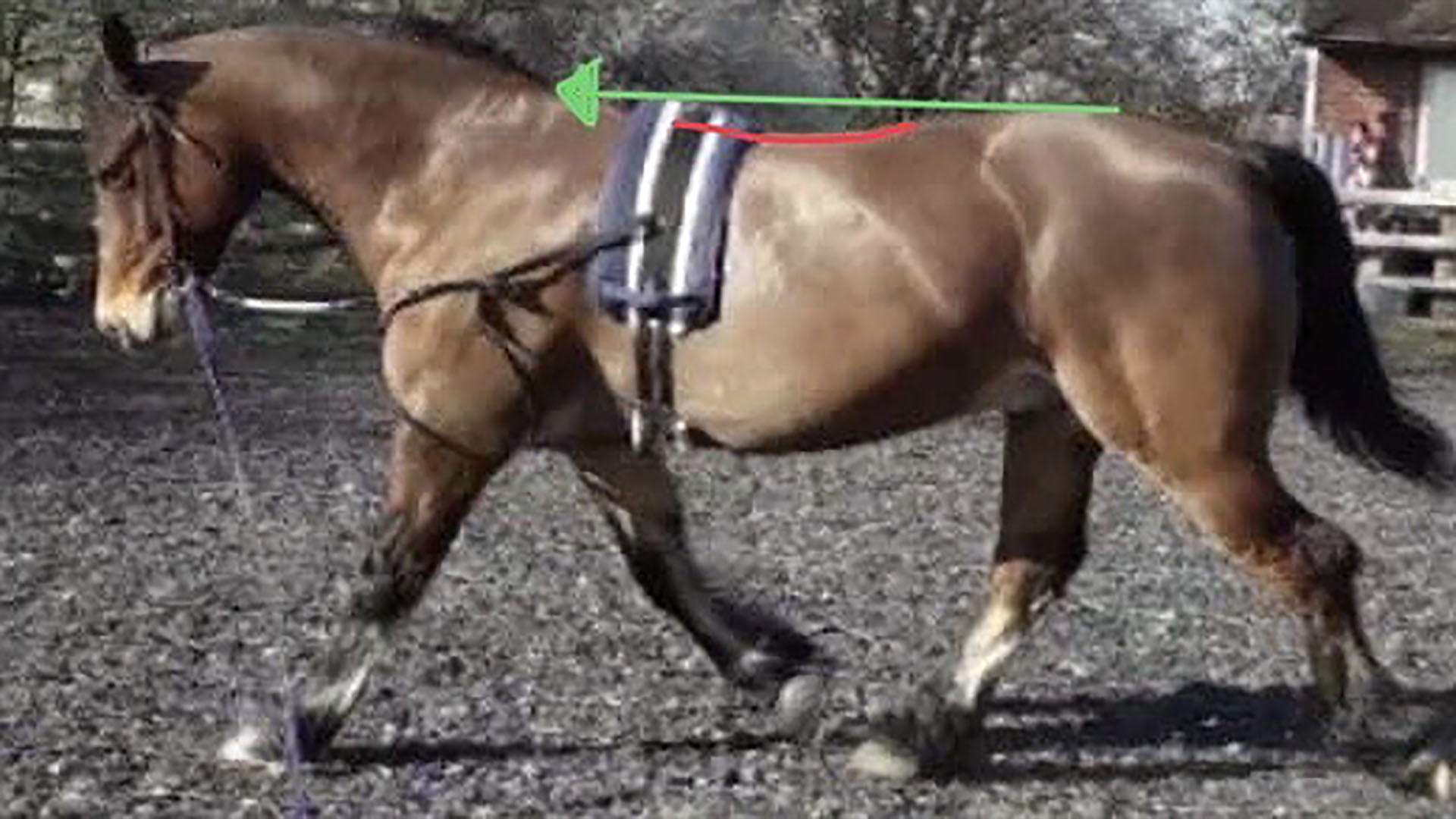It’s not about the bit.
It’s the bit about the bum.
A common everyday problem I hear quite a lot and you probably do too is ‘he’s really hanging on my hand; I need a stronger bit’. This is definitely one of those head in hand moments. I mean don’t get me wrong, we have all been there and all guilty for blaming our tools rather than identifying and resolving the problem, but is a harsher bit really the answer?
“I need a stronger bit"

So, if he really is heavy in front, why?
Some horses tend to be on the forehand due to no impulsion from behind the wither. Don’t forget, the hindquarters are the horse’s engine and this is how they are driven forward. Imagine the horse as a seesaw. If there is a problem affecting the balance, it will tip forward meaning the front will be heavier than the back. This is where you need to find out what is causing the front to be heavier and weigh it back out evenly so the seesaw is straight, ideally pointing a little uphill at the front which would be the correct way for a horse who is really engaged and sat on its hocks.
Possible (not muscle) related factors causing the horse to be heavy in front.
- Teeth – not a hind quarter issue but if the horse has sharp teeth or pain in the mouth of course he is going to hang on the bit, it’s a way of him telling you there is something wrong.
- Sore feet – this goes for front and back. If there is pain in the foot, the horse will compensate where there is no pain. How can he balance and perform correctly with an unbalanced feeling where he bears all of his weight?
- Ill-fitted tack – ok… this will affect muscles directly. Both the saddle and bridle are related to this. Yes, the bridle. Muscles in the face which sit under the bridle can be restricted when too tight. The masseter which opens and closes the mouth, temporalis which sits under the sides of the browband and of course the poll. Bits too high and pressure from the headpiece will restrict that soft accepting mouth, which would encourage the horse to ‘hang on the bit’ but this doesn’t mean you need a stronger one. This will only add to the discomfort.
- Riders heavy hands – a question you should ask yourself is if the horse is heavy or your hands are heavy. It is more common than you think for riders to carry the horse when riding and have an overly tight contact which really isn’t necessary, this is going to cause the horse to pull against you as a way of saying get off – that is if he hasn’t already bucked you off. By riding from your seat to hand and not your hand alone you are asking the horse to sit back and work from behind and use those hind muscles. This is something your trainer can work on with you.
- Confirmation – all horses are put together differently. If the horse is naturally heavier in front of the wither this will make it considerably harder for him to have an uphill way of going as he will find it much harder to sit back on his hocks and lift himself in front, he is more likely to pull himself along with the front end and if you’re on board then your arms are going to feel this too.
This brings us back to: how we can resolve some of these problems.
We all want solutions and better results in the ring as well as a nice pleasant ride and above all a happy comfortable horse.
“We all want solutions and better results”
Firstly, check back, tack, feet and teeth. Ensure your saddle fits and your bridle isn’t too tight or too small. If you have already gone down the route of a stronger bit – ditch it. Consider going back a softer mild bit, one which isn’t being used for lifting/pinning which we have established is not needed this can be done from your seat to encourage the horse to soften in your hand and work from behind. Keep in mind that all horses are different and the stronger horse may need more control, therefore the bit you choose should be one which suits your horses needs. When trying different bits and/or new gadgets, having an established instructor on the ground in an enclosed arena where possible makes it safer should anything upset the horse.
But what is the main reason behind being on the forehand?
Horses are made up of muscle, bone and other soft tissues which are all linked together though fascia. For him to perform properly and feel supple, flexible and connected the whole body must work, however, it is always possible for even the most flexible of horses to feel tense, have weak areas and feel sore from time to time. Horses with weaker front ends who find it hard to lift their torso for the weight to be taken behind, or with hindquarters which aren’t developed enough to push through and take the weight of the horse, are both factors in which equine massage along with corrective exercises can and will improve.
The thoracic cling is the front of the horse from behind the shoulder and is made up of the (muscles front to back) brachiocephalic, omohyoid, pectoral muscles, SVT and external oblique. As horses don’t have a collar bone, there has to be some form of structure to keep the body connected in front and for the body to gain stability at the chest. The thoracic sling must contract correctly to lift the horses’ torso to bring the withers to the same height, or slightly higher than the croup which forms an uphill shape so the horse is not on the forehand. With a weak and disestablished thoracic sling, the horse will be weak through the back, shoulder and neck resulting in being heavy in front and unable to lift the front end.
We want the horse to naturally use those muscles and create a natural shape to lift itself up and let the body do the job it was designed to do.
For horses with a weak thoracic sling, exercises such as hill and straight-line work are perfect. If you can establish straight lines and control the horse through your body then half the battle is won.
Transitions.
As the horse goes up and comes down through transitions the hindquarters engage taking the weight of the horse to make each transition smooth – this is if they are done correctly. Halt to trot and walk to canter transitions are great examples of this type of work and get those hocks underneath the horse. Once transition work is established, pole work can be introduced and raised for extra elevation of the shoulder. By doing these exercises the following muscles are a few which are being developed to improve the horse’s way of going;
- Gluteals ~ hindleg flexion.
- Longissimus Dorsi ~ extension over the spine.
- Supra and Infraspinatus ~ flexion and extension through the shoulder.
- Trapezius ~ lifting the shoulder.
- SVT ~ to aid impulsion.
- Brachiocephalicus ~ lift and hold the neck and shoulder.

"Encourage, not force"
Lunging is another great exercise to help lift and strengthen the horse’s torso and although there are a lot of opinions around using training aids and which ones work best, whichever suits you and your horse better can be used but with care and correctly. The aim of using these is to ‘encourage not force’ the horse to work correctly over the back and not over develop muscles through resistance and an incorrect unnatural shape. If the horse is working in the correct form, the overall shape will come naturally regardless of the training aid used and the horse will start to work either level or slightly up in front. By allowing the horse to develop this shape, the hindquarters are able to what they should be doing and the extension, flexion and stride of the hock will sit him back and through propulsion be able to lift him in front.


a More Uphill Shape.
To conclude.
It really doesn’t make any difference to what bit is used if the trunk of the horse is not functioning properly. Some horse can be ridden in a head collar, with the correct training and maintenance you will still get that uphill, light in front ride without added pressure to the mouth and poll. Developing the correct muscles and keeping the horse supple is really all you need to focus on. So, here is a list of things to consider before you buy a stronger bit or strap your horse in to ‘look good’;
- Be sure his teeth are ok. 6-month regular dentist checks
- Up to date with shoeing, no soreness in the foot
- Monthly massage treatments
- Muscles are always developing especially as they change shape
- Weak spots form, tension and soreness on newly used muscles
- Over and underdeveloped if not used correctly
- Check you are asking the horse to work correctly
- Video yourself and look back to see what the horse really looks like
- Ask for help. Get advice and pick up tips from others
You do not need the fancy training aids, expensive poles and equipment to be able to vary your exercises. Hacking and hill work are your best friends if safe to do so.
For more information on any of my article topics, help or advice please feel free to message or email me.
Send me an email via my contact form or facebook.com/nikkihallequinemassage
